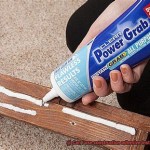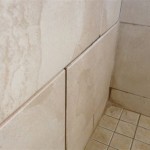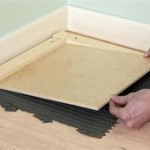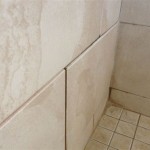The Benefits of Choosing Tile Vinyl Flooring Overlays
Tile vinyl flooring overlays, often referred to as luxury vinyl tile (LVT) or sheet vinyl flooring, represent a versatile and increasingly popular alternative to traditional flooring options like ceramic tile, hardwood, or laminate. This flooring solution offers a compelling blend of aesthetic appeal, durability, cost-effectiveness, and ease of installation, making it a desirable choice for a wide range of residential and commercial applications. The overlay aspect refers to its ability to be installed directly over existing subfloors, further streamlining the installation process and minimizing disruption.
The composition of tile vinyl flooring overlays typically involves several layers. A durable wear layer protects the underlying design from scratches, scuffs, and stains. Beneath the wear layer lies the printed design layer, where high-resolution images replicate the look of natural materials like stone, wood, or ceramic. This allows for a vast array of aesthetic possibilities, offering consumers the ability to achieve the desired look without the associated costs and maintenance requirements of the real thing. The core layer provides stability and resilience, while a final backing layer offers additional cushioning and sound absorption.
The development of advanced manufacturing techniques has significantly improved the quality and realism of tile vinyl flooring overlays. Modern printing technology allows for incredibly detailed and textured surfaces, mimicking the grain patterns of wood, the natural variations of stone, and the grout lines of ceramic tile. This level of detail, combined with the embossed textures, creates a convincingly authentic appearance that can be difficult to distinguish from natural materials at first glance. The continuous innovations in material science and design are contributing to the ongoing growth and popularity of vinyl flooring within the flooring industry.
Enhanced Durability and Water Resistance
One of the primary advantages of tile vinyl flooring overlays is their exceptional durability. The wear layer, typically made of polyurethane or a similar protective coating, is designed to withstand heavy foot traffic, resist scratches, and prevent stains. This makes vinyl flooring particularly well-suited for high-traffic areas such as hallways, kitchens, and living rooms. The protective wear layer minimizes the need for frequent maintenance and extends the lifespan of the flooring.
Furthermore, tile vinyl flooring overlays are inherently water-resistant, and in many cases, waterproof. This characteristic makes them an ideal flooring solution for areas prone to moisture, such as bathrooms, laundry rooms, and basements. Unlike hardwood or laminate flooring, vinyl flooring is not susceptible to water damage, warping, or swelling when exposed to moisture. Spills can be easily wiped clean without leaving any lasting effects. This inherent water resistance reduces the risk of mold and mildew growth, contributing to a healthier indoor environment.
The durability and water resistance of tile vinyl flooring overlays translate into long-term cost savings. The flooring requires less frequent replacement compared to other materials, reducing the overall cost of ownership. The ease of maintenance, involving simple cleaning with a damp mop or cloth, also contributes to cost savings by minimizing the need for specialized cleaning products or professional cleaning services.
Cost-Effectiveness and Ease of Installation
From a financial perspective, tile vinyl flooring overlays offer a significant advantage over many other flooring options. The cost of vinyl flooring materials is generally lower than the cost of ceramic tile, hardwood, or natural stone. This makes it a more accessible option for homeowners and businesses looking to achieve a particular aesthetic on a budget. The affordability of vinyl flooring does not necessarily compromise on quality; many high-quality vinyl flooring products are available at competitive prices.
In addition to the lower material costs, tile vinyl flooring overlays also offer cost savings through reduced installation expenses. The installation process is generally simpler and quicker than installing traditional flooring materials. Many vinyl flooring products are designed with interlocking edges or peel-and-stick backing, allowing for easy DIY installation. This can significantly reduce the labor costs associated with professional installation. Even when professional installation is preferred, the installation time is typically shorter compared to ceramic tile or hardwood flooring, resulting in lower labor expenses.
The ability to overlay vinyl flooring directly over existing subfloors is another significant cost-saving factor. In many cases, there is no need to remove the existing flooring, such as old tile or linoleum, before installing the vinyl flooring. This eliminates the time, effort, and expense involved in demolition and disposal of the old flooring. The overlay installation method also reduces the risk of damaging the subfloor during removal of the old flooring. However, it's crucial to ensure the existing subfloor is level, clean, and in good condition before installing the vinyl flooring to ensure proper adhesion and a smooth, even surface.
Design Versatility and Comfort
The design versatility of tile vinyl flooring overlays is another key factor contributing to their popularity. Vinyl flooring is available in a wide range of colors, patterns, and textures, allowing consumers to achieve virtually any desired aesthetic. The high-resolution printing technology used in the manufacturing process allows for realistic reproductions of natural materials, such as wood, stone, and ceramic tile. This gives consumers the freedom to create the look they want without the expense or maintenance requirements of the real thing.
Beyond replicating natural materials, vinyl flooring is also available in a variety of abstract and contemporary designs. This allows for creative expression and the creation of unique and personalized spaces. The flexibility of vinyl flooring design makes it suitable for a wide range of architectural styles and interior design themes. Whether the desired aesthetic is traditional, modern, rustic, or eclectic, vinyl flooring can be used to achieve the desired look.
In addition to its aesthetic appeal, tile vinyl flooring overlays also offer enhanced comfort underfoot. The resilient nature of vinyl flooring provides a softer and more cushioned surface compared to hard materials like ceramic tile or concrete. This can reduce fatigue and make standing for extended periods more comfortable. Many vinyl flooring products also include an underlayment or cushioning layer that further enhances comfort and reduces noise transmission. This makes vinyl flooring a comfortable and quiet flooring solution for both residential and commercial applications. The added comfort can be especially beneficial in areas where people spend a significant amount of time standing, such as kitchens, retail spaces, or healthcare facilities.
Furthermore, the warmer surface temperature of vinyl flooring compared to ceramic tile or stone can also contribute to a more comfortable environment, especially in colder climates. This can reduce the need for supplemental heating and contribute to energy savings. The combination of comfort, design versatility, and durability makes tile vinyl flooring overlays a compelling flooring solution for a wide range of applications.

Can You Lay Vinyl Flooring Over Tile Mersey

Vinyl Floor Tiles Complete Guide To Pvc And Installation

How To Choose The Best Flooring For Your Home Model Remodel

Vinyl Floor Tiles Complete Guide To Pvc And Installation

Can I Install Vinyl Tiles Over Laminate Flooring Comprehensive Guide

Geneous Tiles Vs Vinyl Flooring 7 Differences To Note

What Is Spc Vinyl Flooring And Are Its Advantages

Why Tile Warehouse

Vinyl Flooring Pros And Cons Forbes Home

Overlay Hydronic Flooring Radiant Underfloor Heating
Related Posts








